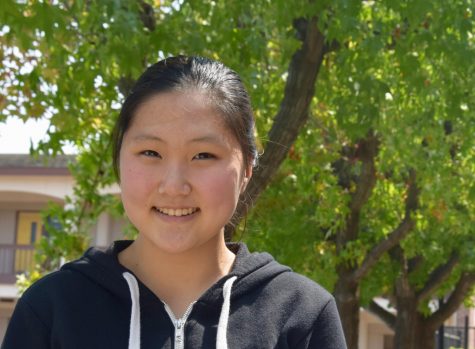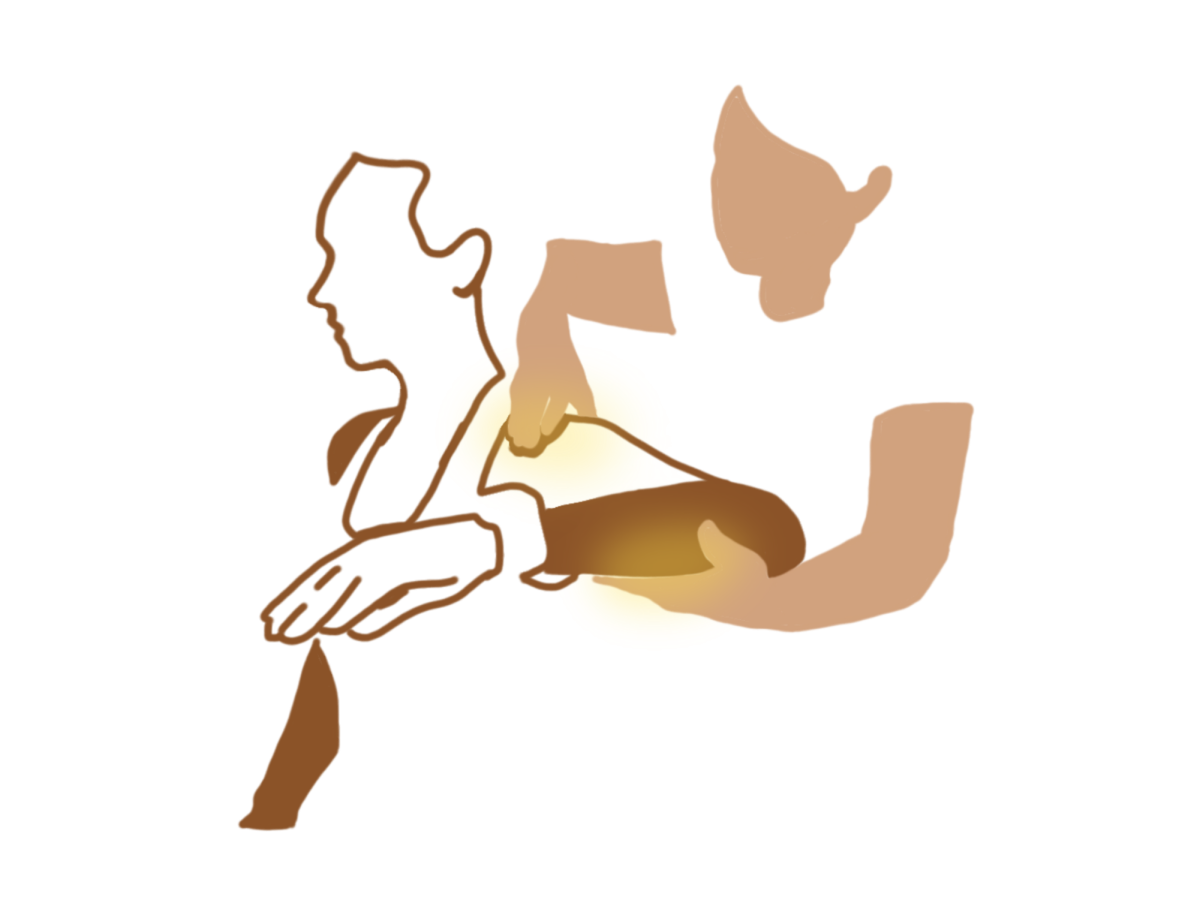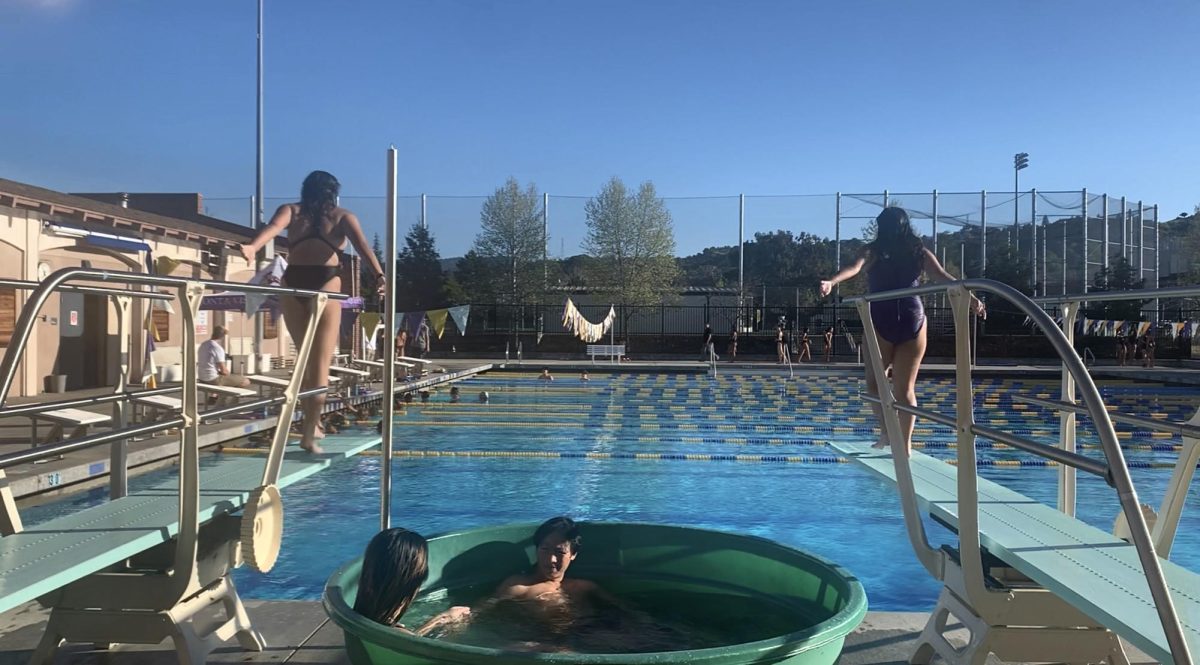Whether it be sneaking peeks at other papers, storing answers on tests using graphing calculators, copying homework or asking for test questions, many MVHS students have violated the academic integrity policy. In response, teachers have developed strategies to minimize cheating in their classes, as well as their own ideas of what an academic code violation should look like in the context of the classes they teach.
“Sadly, it is a part of our culture,” English teacher Vennessa Nava said. “I think that it has been so normalized that people just take it as a given.”
Students turn in a signed document every August pledging to follow the guidelines of FUHSD’s academic integrity policy, which considers actions like copying homework assignments and using electronic devices on tests to be policy violations. But year after year, students fail to follow them.
History teacher Robyn Brostowicz has caught students with notes scribbled on their hands, and now she has her students wave their hands in the air before each test or quiz.
“I have students give a quick jazz hands hello,” Brostowicz said. “I think it also gives a little bit of test relief or a little stress release […] having students smile before they go into the test [and] take a deep breath, but at the same time showing me their [hands].”
Most recently, one of Brostowicz’s students violated the academic integrity policy on an essay. Even though Brostowicz agrees that the pressure of the limited time students have to complete their work combined with the anxiety of doing well can motivate a student to violate the academic integrity policy, she expresses her belief that it’s always more important to be honest.
“As a teacher and as a parent, I would hope that we were molding people to be good and honest people and citizens moving forward outside of the classroom,” Brostowicz said. “I try to reiterate that […]even though the anxiety may be high in that you’re short on time, ultimately doing the right thing is more important.”
Assistant principal Andrew Goldenkranz addresses the common misconception surrounding academic dishonesty reports to colleges. The administration believes in giving students a second chance in cases of a minor offense as it ends with a contact to the parents of the student.
“Generally our perspective with colleges — with very few exceptions — [is that] we do not want to define students by the mistakes they make,” Goldenkranz said. “We want to define them by the things that they do well.”
However when these policies are taken advantage of again and again, or when the offense is serious, the school takes action to contact colleges. The administration is also willing to speak to the colleges regarding the student’s integrity when necessary.
“School reports ask us if a student has ever been suspended or if we have any reason to doubt a student’s integrity,” Goldenkranz said. “Ninety-nine percent [of the time] we have no reason to doubt a student’s integrity, [but in rare cases] we have to characterize a student who made a mistake versus a student who is making the same mistake over and over again.”
As an administration, they respect the decisions the teachers make regarding cheating in their department. As long as the students get the message about the severity of an academic code violation, the mission of leading students in the right direction is complete.
“Some teachers use [this as] a teachable moment [while others] have a fixed response,” Goldenkranz said. “In a world where the rules are not clear, I think part of our teaching job is to help clarify the rules for students.”
Even among teachers, the academic integrity policy has some gray areas that are subject to dispute. There seems to be a thin line between collaborating and sharing ideas and using opinions from others without seeking permission, particularly in the English department.
All students in Honors American Literature classes write an author study during second semester, where they read multiple books by one author and write a research paper analyzing the works as a whole. Although she encourages students to talk about the books with others studying the same author, Nava says that the ideas should still be conveyed differently on assignments.
“If they have the same articulation of ideas then that is crossing the line for sure,” Nava said. “Even when we talk about things in class, everyone still has their own take on the topics we’re talking about.”
Having taught AP biology for years, Pamela Chow has witnessed on several occasions students copying information from upperclassmen who had taken the course previously. This eventually led to the formation of contracts regarding previous students sharing information.
“Now we ask students to sign a paper at the end of the year basically acknowledging that we hope they save their AP biology work, but [that] they shouldn’t be handing that off to another student who’s going to be taking AP biology in the future,” Chow said. “That could get them and the student they handed it off to in trouble if the student decides to copy anything from them.”
AP biology students complete two problem sets for every unit, each including conceptual questions where students are supposed to apply the knowledge they’ve acquired from lectures and textbook readings. Originally, both problem sets were assigned as homework.
Yet upon discovering that students were copying answers from each other, Chow and AP biology teacher Renee Fallon decided to allow students to take the first problem set home for practice, but to have the second individual problem set to be completed in class so that teachers could prevent the information from being spread. Although Chow knows that she can’t control whether people discuss the individual problem sets outside of class, she hopes that keeping the paper in the classroom helps minimize the issue of cheating.
“At least their work is theirs, as they’re doing it in class and the problem sets have not gone home,” Chow said. “Honestly, I don’t think this is a perfect process yet, but it’s hopefully moving towards encouraging students to do it for the sake of learning it as opposed to doing it to get it done.”
Similarly, French teacher Sarah Finck gives very few substantial assignments to be completed outside of class in order to avoid cheating. That decision was in part motivated by an experience she had during her first year at MVHS, when she assigned students a poem analysis and received many versions with advanced language that was above the level of what a student would have.
“What I would consider academic dishonesty would be submitting a full sentence that I would say the student would be incapable of creating on their own,” Finck said.
In many language classes, Google Translate and other translation softwares are considered a violation of the academic integrity policy. Finck explains that it tends to be fairly obvious when students have plagiarized off of a website since the phrasing will be unusually sophisticated.
But sometimes, Finck doesn’t notice the more subtle usage of translation softwares where the vocabulary and structure is typically within the students’ realm of knowledge so it poses less of an issue.
“I would argue that that is the kind of learning that you almost want — that a student says ‘Here’s a new verb, I’m going to try out this tense online somehow and then use my brain to think about how it should be and put it in,’” Finck said.
The fine arts department is also subject to academic code violations. Photography and multimedia teacher Tyler Cripe believes that the false stigma surrounding cheating in the department is wrong.
“We don’t treat photography different than we would teach English or something like that,” Cripe said. “There have been cases in the department where we have had to escalate that to academic code violations and [the student is] always shocked that can happen in a creative class, but of course we are no different from any other department.”
However, the line between cheating and collaborating in art is different from other departments. Cripe believes that if a student takes on a project and requests help in a certain step, it is considered collaborating. When that line is crossed and the final product does not originate from the student, he considers that cheating.
Cripe spoke from his experience when he left a personal photographic print in the darkroom, only to find it later as a student’s final print. He assumes that the student had felt pressure from a deadline and had made the decision to cut a corner by turning in Cripe’s print. Cripe decided to play along but decided later to confront the student.
“Whether I should have escalated that as a code of violation or not, I felt like I got my point across and I gave the student a second chance, and he never did it again,” Cripe said. “I think that was one of those gray areas where it could have gone either way.”
Cripe says that teachers understand that students can make mistakes as they are still young.
“We try to be as human as possible in laying out that you are still learning to be adults and how to survive in the world and show your talents and expertise,” Cripe said. “I think that we are just trying to hold up the best examples and let everybody know that there will be consequences when those things happen.”






















